Lian Tanner's Blog, page 8
December 8, 2018
To tell or not to tell
I was having dinner with some friends the other night, and I mentioned that I’d started a new book and was feeling really excited about it. So they, naturally, asked me what it was about. And I had to say, ‘I can’t tell you.’
So then they asked the title. And I had to say, ‘I can’t tell you that, either. Because it would give too much away.’
That’s been a rule of mine for years now. And every now and again – like the other night – I’m tempted to put it aside. Because when I’m so excited, I really want to tell people why I’m excited. I want to tell them about the ideas that are nibbling at me, and how much fun I’m having with the characters, and my vision for the book. And the utterly brilliant scene that I thought of just this morning.
But I try very hard to control myself, and not say a word. For three reasons.
Firstly, it never sounds anywhere near as good when I talk about it as it does in my head. In fact, if I try to describe it, it usually comes out dull and flat, like a cake that has sunk in the middle. And I’m left wondering, Why did I ever think that was a good idea?
Secondly, there’s always a chance that it won’t work, and that my early excitement will turn out to be a fizzer. I have a number of wonderful beginnings that have never got past that stage, and it’s downright embarrassing to be raving about a book one day, and have to confess that it didn’t work out the next.
Thirdly – and this is the most important reason – there’s a good chance that if I talk about it, I won’t write it. This isn’t so true when I’ve nearly finished the book, but it’s critical in the earlier stages.
I’ve talked to other authors about this, and most of them say the same thing: one of the main things that keeps them going through all the difficulties and the frustration and the solitude of writing a book is the need to tell the story. And if they talk about it, some of that need leaks away.
It’s as if there’s a certain amount of fuel for each story. And you have to keep hold of it, store it up to get you through the long journey, especially the hard parts of that journey when the wolves of self-doubt are snapping at your heels. Otherwise you might find yourself stranded in the snowy wastes, with the horses flagging and the wolves leaping up onto the sleigh …

So – I’ve started a new book and I’m really excited about it. I can tell you that it’s a standalone rather than a trilogy. And that it’s middle grade, like pretty much everything else I write. But that’s it. No more information. Nada. Zilch. You’ll just have to wait. And so will I.
What am I reading?
For children. Regarding the Fountain, by Kate Klise. This has been around for a while – it was written in the 1990s, I think. It’s the hilarious story of the Dry Creek Middle School drinking fountain, and what happens when it springs a leak. It is written entirely in letters and memos, which doesn’t always work for me. But this is so well done, and the characters shine through their writings.

For adults. The Hate Race by Maxine Beneba Clarke, a memoir about growing up black in Australia. It’s a heartrending story about the cumulative effect of casual (and not so casual) racism, and its dismissal by so many adults as ‘just teasing’. Clarke is a terrific writer, and conveys the confusion and pain of the child she was with great clarity. An important book for Australians to read.
Also, Clockwork Boys by T Kingfisher (Ursula Vernon). I loved Nine Goblins so much that I set out to read the rest of her books. And this one is not a disappointment. She writes funny, complex fantasies about deeply fallible characters in grungy, violent worlds. Just the sort of thing I like.
The post To tell or not to tell appeared first on Lian Tanner.
December 1, 2018
House painting
Well the holiday only lasted for a few days. Then I started to get itchy, wanting to get back to Alley Hunters, so I spent last week working through another draft. Which was tricky, because I was having the front of the house painted.
These days I mostly write while sitting up in bed, but that was pretty much impossible with someone scraping paint from the window sill right in front of me. I hate having people working around the house, even if they are outside. I always feel as if I’m holding my breath until they leave, and I have the place to myself again. Then I let out a big sigh of relief and say to Harry, ‘Isn’t solitude nice?’
So I ended up hopping from room to room, keeping as far away from the painter as possible. But now the painting is finished and that week of small discomforts was worth it, because the house looks beautiful. I love this colour.

Now I’m back to thinking about what I’m going to write next. I’ve got four books jockeying for position, and they are all strong possibilities. But one of them is beginning to sneak ahead of the others, so I’m going to spend tomorrow morning doing a quick and dirty outline, and see what happens. I don’t know a lot about the story so far – I just know the beginning and a couple of small things that happen in the middle.
And the working title, though I’m not completely sure of that, either.
On Wednesday (5:30 PM at Fuller’s Bookshop) I’m launching Towns of Tasmania, by Pen Tayler and Bert Spinks, for my friends at Forty South Publishing. And on Friday I’m visiting Bagdad Primary School, a little country school just north of Hobart.
Sounds like a good week.
What am I reading?
For adults and children: The Mouse and His Child, by Russell Hoban. I think I read this years ago – it’s quite an old book – but someone recently reminded me of it, and it was well worth a reread. It’s the heroic story of a toy mechanical mouse and his son, and how they are thrown out into the world and have to survive. (Apart from anything else, they keep having to find someone to wind them up.)
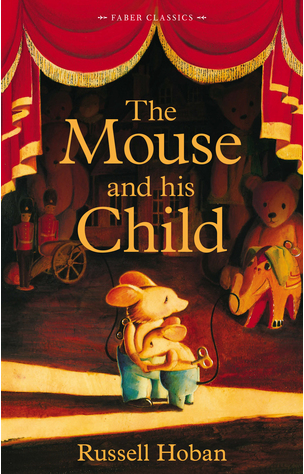
The birds and animals they meet on their journey are hilarious – always eccentric, sometimes vicious and sometimes helpful. It’s the sort of book that you could read as either a ten-year-old or a sixty-seven-year-old, and enjoy hugely.
The post House painting appeared first on Lian Tanner.
November 17, 2018
Holidays
I don’t take many holidays. Mainly because I love what I do, and spending the morning sitting up in bed writing is my idea of fun.
But every now and again a holiday gets forced upon me.
Like now.
I should have seen it coming. For the last couple of weeks I’ve been struggling to write anything. I had three books on the go, and couldn’t work out which one I wanted to start with. I’d write a bit of one, then get sick of how hard it was, and switch to another. And everything I wrote was like trying to wade through mud. Slow and messy.
I get days like that every now and again, but to have it go on for a couple of weeks was a really bad sign.
So last Friday, I stopped writing and took a closer look at what was going on. And I realised that I’d written two books this year without a break between them. And here I was trying to start a third, again without a break.
What’s more, I was feeling sick every time I switched the computer on – which is an unmistakable sign that I need to STOP.
So now I’m on holiday. And it’s a huge relief. Not sure how long I’ll take – maybe a couple of weeks, then launch back into another draft of Alley Hunters.
Meanwhile, it’s a really nice time of year to be in the garden.

The post Holidays appeared first on Lian Tanner.
November 10, 2018
Wind and rats
It’s always interesting talking to a class that has read my books, because their questions are deeper and more specific. For example, at Warrane primary school last week, someone asked me, ‘Why does the magic in your books always involve wind?’
I had to think about that one. But yes, the boy who asked it was right, because Olga Ciavolga in Museum of Thieves had wind magic, and so does Duckling in Accidental Heroes.
So was this just me being lazy?
Not entirely. The two books are set in the same world, but in different parts of that world, so it made sense to me that there would be a similar sort of magic in two countries that are fairly close together.
But there’s another reason. Years ago, I wrote a play for the Tasmanian Symphony Orchestra’s wind section – they wanted a play for primary school students that would show off their oboes, clarinets, bassoons, etc. It was called I’ve Got Wind, and it was the story of Aphrodite Max, Technical and Safety Inspector for the 2002 Around the World Balloon Race, and Nigel Hastings, balloon adventurer.

I did a stack of research before I wrote the play, and found out so much more about wind than I’d ever known or suspected. And that information keeps creeping into my books in the form of magic. Mind you, I think I’m done with it for now. There’s no wind magic in Alley Hunters, at least none that I know of.
The other question that surprised me at Warrane was, ‘Why do you always have rats in your books?’
I had to think about that one, too. And it’s not entirely true. Yes, my very first book was called Rats!.
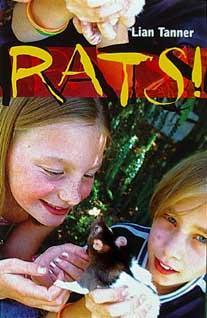
And there was a rat dying of plague in Museum of Thieves. And Mister Smoke and Missus Slink were very important characters in Icebreaker and its sequels. But I think the kid who asked me was also including the mice in City of Lies and Accidental Heroes.
The easiest answer is that I don’t think I could write a book without an animal in it.
I particularly like talking animals for some reason – probably the leftover effect from reading The Jungle Book a hundred times when I was a child. And rats are – interesting. More intelligent than you expect. And loyal. More like little dogs.
Mice, not so much. But they’re cute and don’t take up much space, and can sneak around in a way that a lot of other animals can’t.
I think every writer has obsessions of one sort or another. I have heaps. I just never quite realised that wind and rats/mice were on the list. 
November 3, 2018
Where does a book start?
Books can start in the strangest ways. Some of them start with a character, or a place, or an idea. Museum of Thieves started with the title – or at least, I had the title so early on that it drove the development of the story.
But it also started with the overprotected kid down the street who wasn’t allowed out the front gate because his mother was afraid something bad would happen to him. And it also started with a whole lot of newspaper articles about helicopter parents.
Icebreaker started with a dream – an ancient ship that was still sailing through my mind when I woke up. Sunker’s Deep was inspired by a visit to the captured World War II German submarine that lives deep in the basement of the Chicago Museum of Science and Industry.

It looks quite shiny and new in this picture. But inside, it’s cramped and old and full of stories, and as soon as I walked through the hatch I knew I was going to write a submarine book.
Fetcher’s Song/Battlesong also began with a dream. I’ve no idea what the dream was, but when I woke up, these words were running through my mind: ‘It was New Year’s Eve and the last of the fortune-telling ducks was dead.
So I’m used to books starting in all those weird and different ways. And I know to watch out for them. But Alley Hunters (which I’m writing at the moment) began in a way that was different from anything I’ve done before.
I was in the car, listening to the radio. Someone was being interviewed about a book they’d written, and when I heard the title, Alley Hunters, I was smitten with jealousy.
What a wonderful title, I thought. And what a pity they thought of it before I did. Because my imagination was already throwing up pictures and ideas and questions.
But I kept listening to the interview, and after a while I realised that I had misheard. Their book wasn’t called Alley Hunters after all! I can’t remember what it was now, but it was something that sounded the same but was really quite different.
And I felt a great sense of excitement, because that meant the title was mine. And a good title is inspiring.
(By the way, Icebreaker wasn’t always called Icebreaker. It had a completely different working title, which I used all the time I was writing it. But when it came to publication, my editors didn’t like it, and neither did the marketing department. I was disappointed, but they persuaded me to change it.
Which was just as well. Because its working title was Frozen, and it came out just two months before the very famous movie.)
What am I reading?
For kids: Begone the Raggedy Witches by Celine Kiernan.
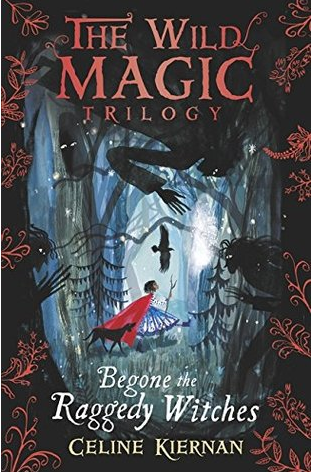
Apart from the fact that I love the title, this was one of my favourite middle-grade books for the year. Here’s the blurb:
On the night that Aunty dies the Raggedy Witches come for Mup’s mam. Pale, cold, relentless, they will do anything to coax Mam back to Witches Borough. When they kidnap Mup’s dad, Mup and her mam must leave the mundane world to rescue him. But Mam is strange on this side of the border – striding, powerful, and distant. Even if they can save Dad, Mup is not sure anything will ever be the same again …
Also: Alanna, the First Adventure by Tamora Pierce. It’s not quite as good as her later books, but it’s well worth a read. And you can see her themes and interests emerging.
For Adults: The Calculating Stars by Mary Robinette Kowal. This is alternative history, which is one of my favourite genres, and begins with a meteorite wiping out much of the east coast of the United States in 1952. The heroine is a pilot and mathematician who realises that there are going to be huge climate changes because of the meteorite, and that the earth is going to become uninhabitable.
So she becomes part of the race to get humanity into space. But what she really wants is to be an astronaut.
I loved this book so much. It also frequently made me want to hit people.
The post Where does a book start? appeared first on Lian Tanner.
October 27, 2018
New bookplates!
Back in 2010, when Museum of Thieves first came out, I had the rather nice problem of how to get my signature to interstate/overseas readers who wanted it. Some authors send postcards, but I really liked the idea of signed bookplates, which people could stick inside the front of their books.
So I asked Sebastian Ciaffaglione, the artist who did the Australian cover and all the character drawings for the Keepers trilogy, to design them for me. And they were gorgeous.

Sebastian also did some for the Hidden/Icebreaker series, with the delightful Mister Smoke and Missus Slink. But when I came to the Rogues, I suddenly realised that it would make a lot more sense to get a bookplate that wasn’t tied to a particular book/series. And then I could keep using it for as long as I liked.
Sher Rill Ng did the covers for the Rogues trilogy, so she was the one I asked to design them. I didn’t really know what I wanted, so I asked her for something that said fantasy/adventure; something a bit quirky. She sent me some roughs, and one of them had a cat sitting next to a pile of books, which I really liked, but I also realised I wanted a sword in there somewhere. 
October 20, 2018
First drafts are rubbish
One of the hardest things about writing a first draft is accepting that a lot of it is going to be rubbish. I really struggle with this; a part of my brain is always urging me to go back and fix what I know I’ve got wrong.
But my more sensible self tells me to make a note and keep going. Because there are things about this story that I don’t know yet – things that will surprise me, no matter how carefully I’ve done the plotting – and if I go back and fix things, I might never learn them. And besides, I need to see the whole thing before I start making changes.
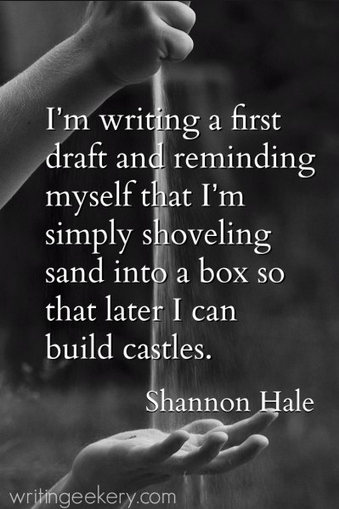
So that’s where I am at the moment with the new book – which I haven’t actually told you about yet because up until a few weeks ago it was one of my many secret projects.
But really, it’s no longer a secret because I’ve told my agent about it and shown her the first part of it. So it’s probably time to tell you, too, though I haven’t got a contract for it yet.
It’s a standalone children’s novel, not a trilogy. It’s going to be a little bit shorter than my usual books – about 40,000 words instead of 60,000. It’s called Alley Hunters. At least, that’s its working title. And I’m well into the first draft, and trying to resist the temptation to go back and fix what’s not working.
What am I reading?
For adults: Saga Land by Richard Fidler and Kári Gísladon. This is a mixture of Richard’s and Kári’s trips to Iceland, and the sagas they are following. I was a bit confused about the sagas – I had them mixed up with the legends of the Norse gods, Odin and Thor, etc. But really they are family stories that have been passed down through the centuries. They’re hugely bloodthirsty, and full of revenge killings, blood feuds, ambition and death. So – entertaining from a distance, but I wouldn’t want to have lived there.
I’m also reading the free stories that Kristin Kathryn Rusch offers to people who subscribe to her blog. She writes under a number of different names, so she has included a whole lot of different stories, to give people a taste of what she does. It’s a mix of detective stories, science-fiction, romance and a bunch of other stuff, and it’s interesting to see someone writing so widely. It also makes my offer of a single story to subscribers look a bit pitiful, so I might have to see if I can dig out some more stories. I’m feeling challenged here!
How about you? What are you reading? Anything good? I’m always looking for recommendations.
The post First drafts are rubbish appeared first on Lian Tanner.
October 13, 2018
Yesterday’s not-a-launch
Well yesterday was perfect weather for my not-a-launch. I sat outside the Hobart Bookshop with my teapot and my signing pens, and chatted to whoever turned up, and enough people came to make me feel wanted.

One of the nicest things was seeing people who come to every launch, who turn up year after year to say hello and buy books and take photos. Ella started off reading the Keepers when she was in Year 3, and is now in Year 11. I only see her once a year, but she feels a bit like an old friend. Same with Jacinta and Martyn, adult sister and brother who love fantasy (Jacinta took these pics).

And then there are friends, and teachers, and teachers who have become friends because of the books, including Mary who let me read the entire manuscript of Museum of Thieves to her Lauderdale primary school Year 5 class roughly ten years ago. It was an early draft of the book, so it was very different from what ended up being published. And part of that difference was due to her kids, who gave me feedback and talked about what they loved and didn’t love. I read it to them over two weeks, and their reaction was my first inkling that I had something fairly special on my hands.
Now it’s back to writing, and putting the finishing touches to the website. I think it’s pretty much done, though if you stumble across something that is not working, please let me know. The free-Keepers-story-for-subscribers is working at last (because I just tested it), but I don’t think people who subscribed earlier will have received it.
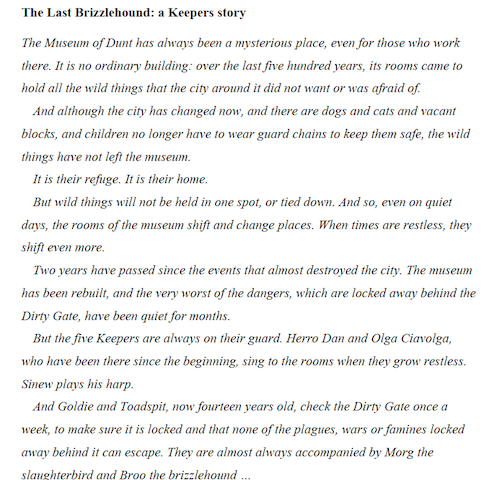
So if you’re a subscriber and you’d like to read ‘The Last Brizzlehound’, leave a comment and I’ll email it to you.
What am I reading?
For kids (middle-grade): Tuesdays at the Castle by Jessica Day George. This has similarities to Museum of Thieves, in that the rooms move around and change, according to the mood of the castle. It’s the story of Princess Celie, who is trying to map the changes. But when her parents disappear, her knowledge of the castle is the only thing that might save the kingdom. I really enjoyed this – Celie is a great heroine, the villains are loathsome and the ever changing castle is wonderful.
For adults: I found two terrific books this week. The first, Girl Waits with Gun by Amy Stewart, is the fictionalised story of Constance Kopp, one of America’s first female crime fighters. She’s a tall woman who has been isolated from the world since a family secret sent her and her sisters into the country fifteen years ago. But when she comes up against a ruthless factory owner, she finds she has a knack for fighting back. It’s beautifully written, often funny, and Constance is one of those splendid heroines who suffers no fools.
The second was Dear Mrs Bird by AJ Pearce, set in London in 1941. Emmeline Lake dreams of becoming a Lady War Correspondent and when she spots a job advertisement in the newspaper, she seizes her chance. But after an unfortunate misunderstanding, she finds herself typing letters for the formidable Henrietta Bird, the renowned agony aunt of Woman’s Friend magazine. Also well written, also funny, but immensely moving, too, in its depiction of London during the Blitz, and the way people coped with it.
The post Yesterday’s not-a-launch appeared first on Lian Tanner.
October 6, 2018
Finished is better than perfect
Years and years and years ago, I tried to write a children’s story about two characters called Mr Gumshackle and Miss Leatherbarrow. Looking back, the idea was way too cute, and I was trying to be too clever, and I doubt if anyone except me would have been interested in reading it. (But that’s part of the learning process, writing badly over and over again until you start to improve.)
The thing about this story was, I never got past the second paragraph. I got stuck, trying to make the beginning perfect. I rewrote it over and over again, obsessing over individual words. I took them out and put them back in again. I moved them around. I tried to make them sound more impressive.
And all this time, I had no idea what was going to happen in the story after the beginning.
I haven’t done that for years, but I was reminded of it yesterday when I was talking to a friend who is studying nursing. She’s up to her back teeth in end-of-year assignments and essays, and really struggling to get them done. And after we’d talked for a bit, it became clear that she was doing that obsessing-over-individual-words thing. Trying to get the first very small part of the assignment perfect before she moved onto the next part.
I love giving advice, I really do. I usually have to stop myself because I long to leap in with my superhero cape streaming out behind me, even when I’m not asked. Which is not a good thing. But my friend wanted advice, because she was in a hole and didn’t know how to get out of it.
So I told her how my first draft is always a discovery draft, and how I try to get the whole story down before I go back and fix it. And how research is one of the last things I do, not the first, because it’s no use spending hours researching something if you end up cutting that part of the story. And how all successful writers know that finished is better than perfect, because perfect doesn’t exist, and if you go looking for it, you end up down a rabbit hole that never ends.
Then I sent her off to do a quick and dirty outline of the whole assignment, without doing research, without obsessing, without worrying if it was right or not. (I was very bossy, which was fun.)
And she did it! She dropped in last night with her quick and dirty outline, with a much better idea of where the assignment was going and how much she already knew. And much less panic.
I still get stuck sometimes. Still find myself obsessing over a sentence that no one else but me is going to notice. So this was a really nice reminder. Forget perfect. Get it finished.
The post Finished is better than perfect appeared first on Lian Tanner.
September 29, 2018
How not to have a book launch
Secret Guardians, book 2 in the Rogues trilogy, is out at last, and Duckling and Pummel are heading into more danger, along with Lord Rump, Arms-mistress Krieg, the young Margrave, the cat, a black chicken called Dora and four white mice.
It’s always so exciting when something that has been sitting in my head for the last couple of years actually hits the shops and the websites. And this one is particularly exciting because of – no, I’d better not tell you. It would be giving too much away. But here’s a hint: keep your eye on that chicken.

So for the last few weeks, people have been asking me if I’m going to have a book launch. Now the thing about book launches is, they’re usually pretty boring. (I’ve been to a lot of them, so I know.) Someone stands up and makes a speech, then someone else stands up and makes a speech, then someone else stands up and …
You get the idea.
They’re not all like this. Some people – especially children’s authors – understand that book launches should be fun, and put a bit of imagination into it. Matt Stanton, who writes the Funny Kid books, does hilarious YouTube launches. Other people have cupcakes, which are guaranteed to make any event better.
In the past, I’ve had wonderful launches. For Path of Beasts, I had a mystery guest.

For Sunker’s Deep, we turned the whole room into a submarine and had shadow puppets.

But these events take a huge amount of planning (plus the very generous help of my friends), and they knock me out for at least a week afterwards. This year I don’t have the energy. I can’t bring myself to have a boring old launch with just speeches, so I’ve taken the drastic step of declaring that I’m not going to have one at all.
Instead, for those of you in Hobart, I’m going to be signing books and chatting to people (about the book, mysterious chickens and anything else that comes up) at the Hobart Bookshop in Salamanca Square from 10:30 AM to 11:30 AM on Saturday, October 13. I won’t have to do any planning, so I’ll be relaxed and cheerful. Come along and say hello.
If you’re not in Hobart but you want a signed book, you can either contact the Hobart Bookshop and asked them to get me to sign one for you, or you can leave a message on my blog and I’ll send you a signed bookplate.
And if you’d like to read the first chapter of Secret Guardians, you can do it here.
The post How not to have a book launch appeared first on Lian Tanner.



